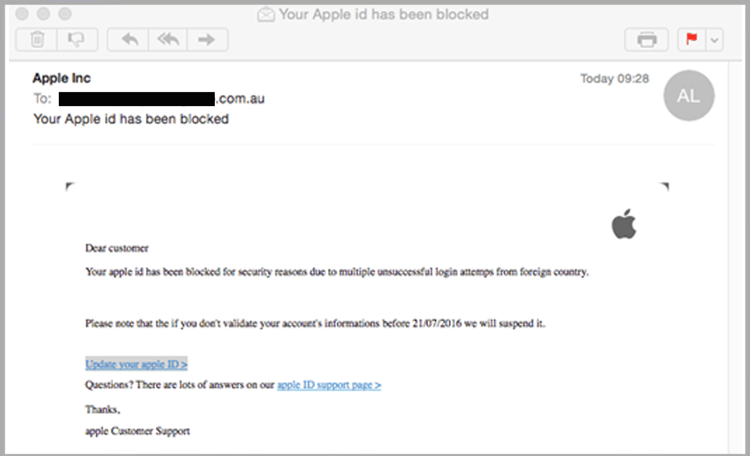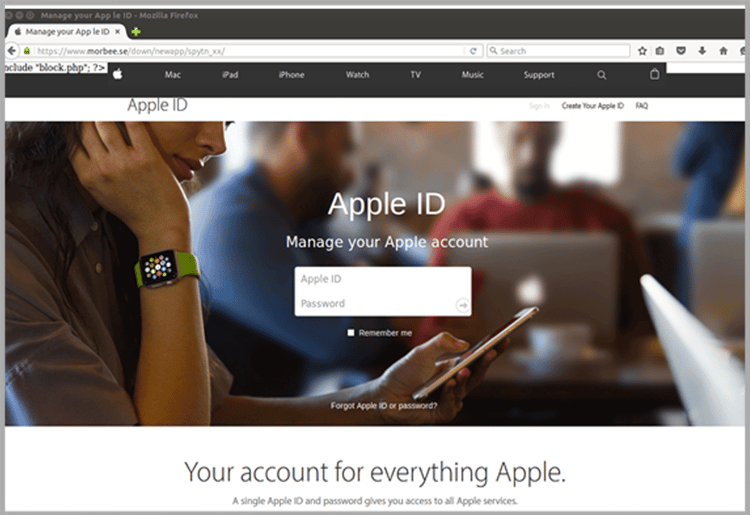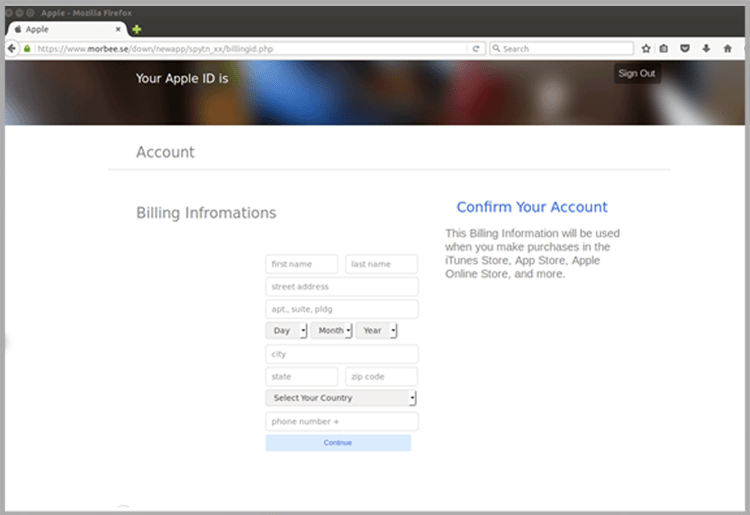In a new twist on many of the Apple scams we’ve seen before, cybercrime networks are again sending phishing emails to Apple users in an attempt to steal login credentials and other personal information.
The Apple scam, which appears to originate from the American technology giant, gives readers the impression that their account has been blocked due to ‘too many failed login attempts.’
Below is a sample of the email that users should look out for:

The email contains several grammatical errors which should be an immediate give away, however users who quickly click the ‘Update your Apple ID’ link without reading the detail may be forgiven for thinking that the communication looks like a legitimate email communication from Apple.
By clicking ‘Update your apple ID’, recipients are taken to a fake Apple landing page which is a replica of the legitimate Apple login page, viewable at https://appleid.apple.com.
Here is a sample of the landing page:

Immediately obvious is the URL that the phishing page is hosted on, www.morbee.se is not that of the legitimate Apple brand.
Entering the Apple ID and Password immediately gives cybercriminals your login credentials. The following page asks for personal information like address, date of birth, phone number etc. These can all be used by the cyber criminals to engage in identity theft not only with Apple but elsewhere on the Internet. Fortunately, this page contains more obvious grammatical errors so we hope most users will spot the scam.
Clicking ‘Continue’ redirects users to another phishing page seeking credit card details. As Apple do require credit card details to be linked to the account, recipients can easily believe this is required and may hand over the card details, giving cyber criminals access to the victim’s funds.

Apple phishing campaigns have also been used in the past to leak nude celebrity pictures, as described in this article.
At the end of the process, hitting ‘Submit’ takes recipients to a fake ‘Thank You’ page hosted on the same domain.
Why phishing emails are bad for business
Although this fake Apple phishing email is primarily targeted towards consumers, cyber criminals also use phishing emails to manipulate employees into surrendering access to a range of sensitive and valuable business information.
This can include access to your corporate usernames and passwords used to access and steal confidential data, or verification information used to access your business bank accounts and appropriate funds.
The financial, reputational and litigation costs associated with phishing can be huge, and it’s important that your business takes steps to protect itself.
If you’ve received this Apple email scam, Apple ask that your forward it to abuse@icloud.com. They also offer a range of information on how you can identify and report suspected phishing emails involving their company.
We recommend that you educate staff on how to spot phishing emails in the event that they infiltrate your email inbox – you can access a range of hints and tips here.
Keep up to date on the latest email scams by subscribing to MailGuard’s weekly update or follow us on social media.







